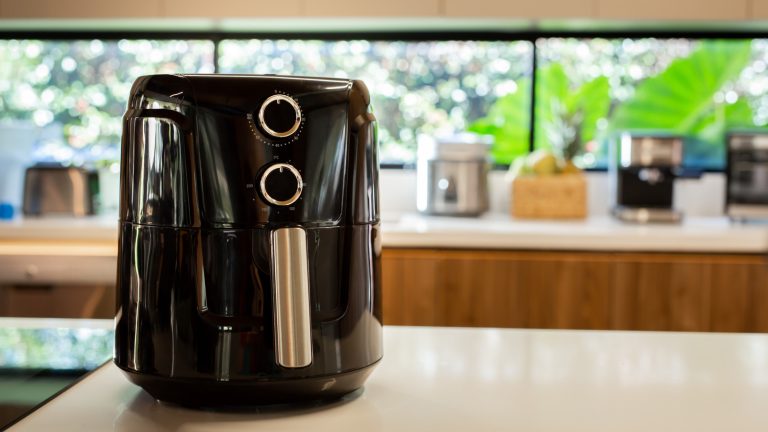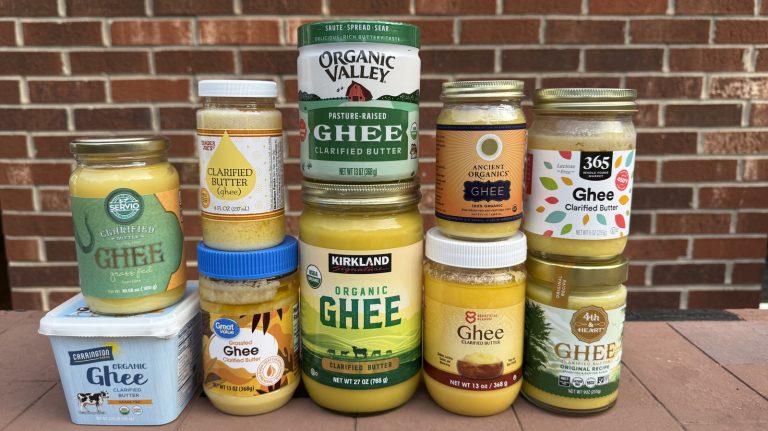Tales of mixing juniper berries with alcohol date as far back as 70 A.D., yet the classic juniper-infused spirit we know of as gin originated in the 16th century. Initially called genever by the Dutchmen who made it, once the English got ahold of the stuff in the late 1600s, the gin craze officially took hold, and in the centuries since, its grip has hardly softened.
The process of making gin begins with a neutral spirit made from natural grain that’s fermented, distilled, and then infused with juniper berries and other aromatics. From there, there’s a variety of additives, from ingredients to special techniques, that producers can employ to manipulate gin’s classic character.
As a blank canvas for creativity, gin has proven to be a fruitful choice, and if you don’t believe me, I’ve compiled a list of the 10 must-have styles of gin dominating the market. As a seasoned bartender, I’ve developed first-hand knowledge of classic gin cocktails and popular gin brands, and this list is for the entry-level mixologist and the seasoned gin enthusiast alike.
London Dry – Vesper
Perhaps the most ubiquitous style of gin on bar shelves across the globe, London dry is a classic expression that celebrates gin’s quintessential characteristic: juniper. Originating in London in the 19th century, the methodical distillation process was established to signify quality and craftsmanship, distinguishing London dry gins from less-refined potables entering the marketplace. In 2024, Bombay and Tanqueray were two of the most popular brands of London style gin behind Beefeater, though the expression is not exclusive to England’s capital city.
As London dry gins tend to be aromatic and pine-forward on the palate, the best way to drink London dry gin is in a cocktail. The stalwart spirit behind many prohibition-era cocktails, London dry is an obvious choice for a highball and for sipping straight-up. It’s also a dependable sidekick to prop up additional spirits, making the jack-of-all-trades London dry gin the perfect base for the Vesper.
The James Bond inspired martini balances three parts gin with one part vodka and half of Lillet. The French aperitif is citrusy, floral, and mildly sweet — flavors that marry well with the botanical essence of London dry gin. Before imbibing, be sure to express a lemon peel for added brightness and citrus fragrance.
New Western/Contemporary – Bramble
While still adhering to TTB regulations, New Western and Contemporary gins tone down the juniper in favor of other botanicals like locally sourced herbs, spices, and florals, which highlight the subtle characteristics of place in the bottled end result. The New Western label was introduced by the team behind Aviation Gin as a means to describe its “New World” style of gin, it doesn’t imply geographical origin. All the same, contemporary gins have proven to be a fitting canvas for distillers to showcase their individual terrior — utilizing indigenous ingredients grown in distinct climates with unique soil properties.
The creativity and intention behind New Western gins has led to some standout varieties that are truly one of a kind. St. George Terrior gin captures the woody aromas of Northern California in a bottle. Roku gin showcases six botanicals native to Japan. With such a diversity of expression coming from New Western gins, the sweet and juicy bramble cocktail is a great way to serve it.
For your bramble, omit the specs for blackberry liqueur and opt for a shrub instead. Made from equal parts fruit, sugar, and vinegar, a blackberry shrub will lend the bramble with its signature fruit-forward flavor. A shrub packs an acidic punch, which softens the berry’s jamminess while providing the sugar component of the cocktail, and allowing the gin’s botanical essence to really shine.
Plymouth – Martini
A truly historic and singular style of gin, Plymouth gin has been made with the original recipe of botanicals in the same distillery since 1793. Established by Black Friars monks on England’s South West coast, the Plymouth Gin Distillery produces one of the few gins to hold a protected geographical indication (PGI), ensuring the predominantly juniper flavored gin expression is made in the city of Plymouth with an ABV of at least 37½ percent.
Plymouth gin has a rich history of utilizing copper pot batch distillation methods, resulting in its distinct taste and silky texture. Combined with its signature combination of seven botanicals, which include the spices angelica and orris roots, Plymouth gin has an earthy character with citrusy overtones. Juniper is present on the palate, yet Plymouth gin’s slightly oily texture and spicy aromas define its dominant character, making this style of gin the best fit for a sleek martini.
The martini is perhaps the most versatile cocktail out there. When pouring Plymouth gin as your martini base, keep it classic. Three parts Plymouth gin stirred over ice, served straight up, and garnished with a lemon peel is all you need for take off.
Old Tom – Tom Collins
A tried and true highball for summertime imbibing, the Tom Collins can support a variety of gins without reducing its beloved taste or crushability. Indeed, the combination of gin, sugar, lemon, and club soda makes for a harmonious union that doesn’t require any meddling. However, if you get the itch to embolden this classic with an added layer of sweetness, look no further than Old Tom gin.
Old Tom is a slightly sweet style of gin introduced by merchants in the 19th century — mostly pub owners who bought the base spirit from distillers only to add their own ingredients to impart sweetness. Besides sugar, the typical sweetening agent in Old Tom gin is licorice, but with no rules on production methods, there’s a wide variety of Old Tom gins. In fact, many Old Tom gins undergo barrel aging, which also has a sweetening effect on the spirit and gives the Old Tom gin its notable amber hue.
One of the most beloved pre-prohibition cocktails there is, a Tom Collins with an Old Tom upgrade is a must have.
Dry Gin – Gimlet
The simplicity of dry gin comes from its meticulous production methods and makes for a pleasing accompaniment to a variety of cocktails. A style of gin suited for beginners and connoisseurs both, dry gins straddle the line between the flavors of strictly-made London dry gins and their sweeter spirituous forebears.
With almost no rules or regulations impacting production methods, dry gins run the gambit of expressions, though they always highlight juniper’s pine-forward flavor. Some gin brands, such as Hendrick’s, incorporate additives such as cucumber and rose after distillation, while others simply showcase the straightforward, juniper-infused profile of the classic spirit.
For a traditional gimlet, the unadulterated character of dry gin props up the lime juice and simple syrup spectacularly without disappearing into the void like a flavorless vodka would. Upgrading to a dry gin is an easy way to deepen the complexity of your favorite drinks without weighing it down.
Navy strength – Gin and tonic
Navy strength is a highly concentrated style of gin that’s big on flavor and alcohol. This British derived spirit comes with a higher proof than other gins — it starts at 54½ percent ABV — which ensured it was stable enough to survive the navy’s trips overseas. Today, navy strength gin’s legacy has grown considerably, making it a powerful mixing agent for classic and contemporary cocktails alike.
It’s so fiery, in fact, Navy strength gin works particularly well in cocktails that incorporate a non-spirituous ingredient. Whether shaken vigorously with fresh juice or served with a carbonated mixer over ice, the process invites additional distillation to the cocktail, which softens the high alcohol level of navy strength gin and its strong flavor.
A gin and tonic utilizing navy strength gin is the fastest and most flavorful way to experience the best of both worlds: a lip-smackingly satisfying slug of high-proof gin with a herbaceous hit of its quintessential juniper flavor.
Genever – Old fashioned
Genever is an unmatched style of gin that originates from the Dutch and has held protected geographical indication (PGI) status since 2008. The Dutch expression carries gin’s essential juniper flavor — genever is the Dutch word for juniper. Its production deviates from traditional gin-making methods by utilizing a mash bill that’s more akin to bourbon. The bottled end result marks the little known midway point between whiskey and gin, where genever reigns supreme.
Genever abandons the neutral spirit base that serves as the foundation of all other gins for malted grains instead. Incorporating a corn, rye, and barley distillate into the juniper-infused spirit, the subtly malty, slightly botanical character of genever makes it one of the boldest gins, unmatched in both flavor and depth.
In other words, it’s the perfect style of gin to stand up to the austere, yet unfussy old fashioned cocktail. Pairing back the smoky sweet flavors of bourbon by substituting genever in its place, the cocktail’s overall character is softened, while the botanical essence adds complexity to the three-ingredient classic.
Sloe Gin – Gin Fizz
Technically considered a liqueur due to its slightly lower proof, sloe gin incorporates berries from the blackthorn tree in the distillation process, yielding a fruity, ruby-red spirit with hints of plum and cassis.
The plant isn’t native to the United States, but blackthorn grows in abundance across Europe and the United Kingdom, and their ubiquity is what prompted the British to steep its tart berries in sugar and gin. As the berries are rather astringent on their own, the gin’s botanicals enhance the style’s unique berry dimension. The bottled end result is a floral, fruit-forward style of gin, and the titular ingredient in the classic cocktail, the sloe gin fizz.
The sloe gin fizz is rumored to have originated by American bartenders in the early 1900s as a riff on the classic gin fizz. Served in a highball, the sloe gin fizz mixes the berry-infused gin with lemon juice, simple syrup, and club soda, resulting in a low-proof drink with the classic flavor of gin plus a juicy kick.
Flavored Gin – Bee’s Knees
Pushing the boundary in the world of gin, flavored gins introduce new aromatics, bolder styles, and stronger flavors to the classic spirit. The production of sloe gin in the 1700s may well have marked the beginning of the flavored gin movement; contemporary producers are celebrating its renaissance — and so should you — because when it comes to flavored gins, there’s a bounty to choose from.
Take Barr Hill — also known as America’s most awarded gin — for example. Made by Caledonia Spirits in Vermont, Barr Hill’s unique production process involves washing the gin over a basket of juniper berries and finishing with raw honey. Far from traditional, these methods produce a distinctive gin that bodes especially well for making a Bee’s Knees.
Taking the place of sugar in the Bee’s Knees, honey makes for a lusher version of the gin sour, and its floral profile melds especially well with gin. To modernize this classic even more, use Barr Hill’s honey finished gin in place of an old-world dry style, bolstering the flavors of the sweet and floral Bee’s Knees.
Aged Gin – Negroni
A simple production technique that can bring an entirely new dimension to gin’s character, barrel aging is a tried and true way to impart more depth of flavor to the straightforward spirit. When a spirit is barrel aged it absorbs the flavors of the wood, yielding a sweet, spicy, and sometimes smoky flavor in addition to an amber color. In gin’s case, the barrel aging process can only begin after the initial distillation of the neutral spirit with juniper is complete, ensuring gin’s distinct taste in the aged product.
Due to its nuanced complexity, the best barrel-aged gins are usually enjoyed neat, but for a sophisticated version of a negroni, an aged gin alongside Campari and sweet vermouth is guaranteed to be a palate pleaser.
Stirred over ice in equal parts, the botanicals of the gin highlight Campari’s bitter flavor while the aged essence of the spirit enhances the earthy character of the fortified wine. Better still, batch your negroni in a container of your choosing as the entire cocktail benefits from barrel aging. Let time handle the rest, and when the aged negroni is just right, enjoy!





